-
 Bitcoin
Bitcoin $118600
-1.16% -
 Ethereum
Ethereum $3616
-2.94% -
 XRP
XRP $3.174
-10.23% -
 Tether USDt
Tether USDt $1.000
0.01% -
 BNB
BNB $773.4
-0.42% -
 Solana
Solana $189.3
-6.58% -
 USDC
USDC $1.000
0.02% -
 Dogecoin
Dogecoin $0.2406
-10.24% -
 TRON
TRON $0.3098
-1.24% -
 Cardano
Cardano $0.8139
-9.10% -
 Hyperliquid
Hyperliquid $44.01
-2.71% -
 Stellar
Stellar $0.4266
-9.64% -
 Sui
Sui $3.699
-7.29% -
 Chainlink
Chainlink $18.21
-6.60% -
 Hedera
Hedera $0.2465
-9.46% -
 Bitcoin Cash
Bitcoin Cash $512.3
-2.27% -
 Avalanche
Avalanche $24.03
-5.62% -
 Litecoin
Litecoin $112.2
-5.21% -
 UNUS SED LEO
UNUS SED LEO $8.964
-0.26% -
 Shiba Inu
Shiba Inu $0.00001386
-9.81% -
 Toncoin
Toncoin $3.188
-4.76% -
 Ethena USDe
Ethena USDe $1.001
-0.02% -
 Polkadot
Polkadot $4.135
-7.84% -
 Uniswap
Uniswap $10.16
-5.19% -
 Monero
Monero $310.5
-2.84% -
 Bitget Token
Bitget Token $4.702
-2.53% -
 Dai
Dai $0.0000
0.01% -
 Pepe
Pepe $0.00001270
-9.07% -
 Aave
Aave $290.7
-5.84% -
 Bittensor
Bittensor $424.7
-5.28%
How to operate if the stock opens low and moves low the next day after a large volume limit?
After a large volume limit-up followed by a weak open, traders should assess momentum shift, volume patterns, and technical signals to determine if it's a reversal or buying opportunity.
Jun 29, 2025 at 07:29 am
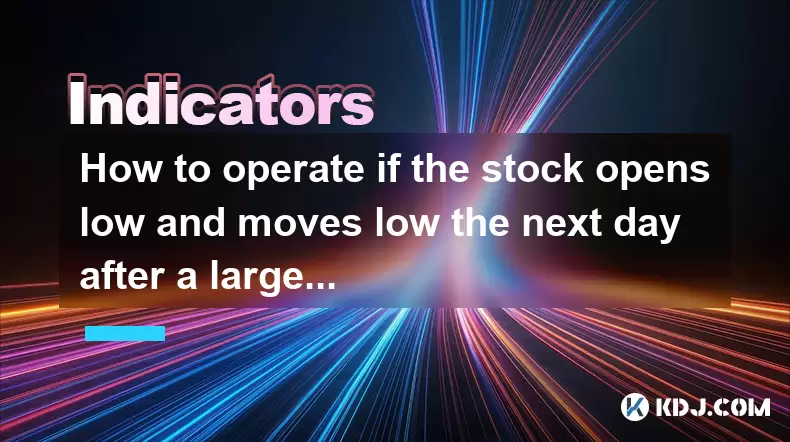
Understanding the Scenario: Large Volume Limit and a Low Opening
When a stock experiences a large volume limit, it typically means that the price has reached its maximum allowed movement for the day, either up or down, with unusually high trading volume. This often signals strong investor sentiment, whether positive or negative. The next day, if the stock opens low and continues to move lower, it indicates that the momentum from the previous day’s limit is shifting toward bearish behavior.
The key question becomes: How should traders react in such situations? It's crucial to understand what drives this pattern. A large volume limit followed by a weak opening suggests that the market may be reversing course. Volume plays a critical role here because it shows the intensity of buying or selling pressure. If the limit-up day was driven by speculative buying but failed to sustain itself, the subsequent drop may signal profit-taking or a loss of confidence.
Analyzing Price Action After a Limit Move
One of the first steps is to examine the price action after the limit break. Did the stock gap down significantly at the open, or did it gradually drift downward? A sharp gap down on high volume can indicate panic or aggressive selling. Conversely, a slow decline might suggest uncertainty among traders.
Traders should pay attention to candlestick patterns during this phase. For instance, a long upper shadow on the limit-up candle could imply rejection at resistance levels. Similarly, a bearish engulfing pattern or dark cloud cover forming the next day can provide additional confirmation of a reversal.
Another important factor is liquidity. High volume combined with rapid price movements can lead to slippage, especially for retail traders executing market orders. Monitoring order books and using limit orders may help mitigate execution risks.
Evaluating Market Sentiment and News Flow
Market sentiment often dictates how stocks behave after volatile moves. If there is no significant news supporting the initial limit move, it might have been a speculative rally without real fundamentals behind it. In such cases, a pullback is expected as traders take profits.
It’s essential to check news sources, earnings reports, or regulatory announcements that may have influenced the price surge. If the original catalyst was short-lived or proven false, the market will likely correct itself quickly. Social media trends, particularly on platforms like Reddit or Twitter, can also drive sudden spikes in volume and price.
Additionally, monitoring institutional activity through tools like block trades or insider transactions can offer insight into whether smart money is exiting or entering positions. Retail traders should be cautious when following momentum without understanding the underlying cause.
Technical Indicators to Guide Your Decision
Using technical indicators can help determine whether the downtrend is temporary or part of a larger reversal. The Relative Strength Index (RSI) is useful for identifying overbought or oversold conditions. If RSI drops below 30 after a sharp decline, it may signal a potential bounce. However, in strong downtrends, RSI can remain oversold for extended periods.
The Moving Average Convergence Divergence (MACD) can also confirm trend strength. A bearish MACD crossover following a limit-up event supports the idea of weakening momentum. Meanwhile, Bollinger Bands may expand dramatically during high-volume days, signaling volatility. A close near the lower band after such a move can sometimes present contrarian opportunities.
Support and resistance levels must also be analyzed. If the stock breaks below a key support level after the limit-up, it could trigger further selling. Traders should consider placing stop-loss orders accordingly to manage risk effectively.
Risk Management Strategies for Volatile Moves
Given the unpredictability of such scenarios, risk management becomes paramount. One approach is to reduce position size or exit entirely if the initial trade thesis no longer holds. Holding onto a losing position based on hope rather than analysis can lead to significant losses.
For those who still believe in the long-term potential of the stock, dollar-cost averaging or scaling into positions during dips might be viable strategies. However, this should only be done after thorough due diligence and not merely based on emotional attachment to a prior gain.
Setting clear stop-loss levels is crucial. A common practice is to place stops just below recent swing lows or key moving averages. Trailing stops can also be used to lock in gains while allowing for some price fluctuation.
Lastly, diversification remains a key principle. Avoid allocating too much capital to a single volatile stock, especially when the reasons behind its movement are unclear or speculative.
Frequently Asked Questions
What does it mean when a stock opens low after a limit-up?
A stock opening low after a limit-up suggests that the bullish momentum from the previous session is fading. This could be due to profit-taking, lack of continued buying interest, or a shift in market sentiment. High volume during the limit-up followed by a weak open often signals a reversal rather than continuation.
Should I sell immediately if the stock drops after a limit-up?
Not necessarily. Immediate selling depends on your strategy and the reason behind the initial move. If the limit-up lacked fundamental backing or showed signs of exhaustion, taking partial profits might be wise. However, if the company fundamentals remain strong, holding through short-term volatility could be justified.
Can I buy the dip if the stock falls after a large volume limit?
Buying the dip requires careful analysis. Look for technical indicators showing oversold conditions or signs of institutional buying. Also, ensure that no major negative news has emerged. Buying without confirmation can expose you to further downside risk.
How do I differentiate between a healthy pullback and a full reversal?
Healthy pullbacks usually occur within an uptrend and show lower volume compared to the initial rise. Reversals, on the other hand, often feature increased selling pressure, breakdowns below key support levels, and bearish candlestick patterns. Monitoring both price structure and volume helps distinguish between the two.
Disclaimer:info@kdj.com
The information provided is not trading advice. kdj.com does not assume any responsibility for any investments made based on the information provided in this article. Cryptocurrencies are highly volatile and it is highly recommended that you invest with caution after thorough research!
If you believe that the content used on this website infringes your copyright, please contact us immediately (info@kdj.com) and we will delete it promptly.
- Score Big This Season with the BetMGM Bonus Code: Your Ticket to MLB Bonus Bets!
- 2025-07-24 06:50:12
- Bitcoin: From Digital Gold Rush to Evolving Asset Class
- 2025-07-24 06:50:12
- Shiba Inu's $1 Dream: Major Hurdles and Community-Driven Hope
- 2025-07-24 06:30:13
- Ethereum, Altcoins, and BlockDAG: Navigating the Crypto Landscape
- 2025-07-24 06:30:13
- Dogecoin's Resistance Retest: Parabolic Move on the Horizon?
- 2025-07-24 04:50:13
- WLFI, Vaulta Token, and Holdings: Navigating the Web3 Revolution
- 2025-07-24 05:30:13
Related knowledge
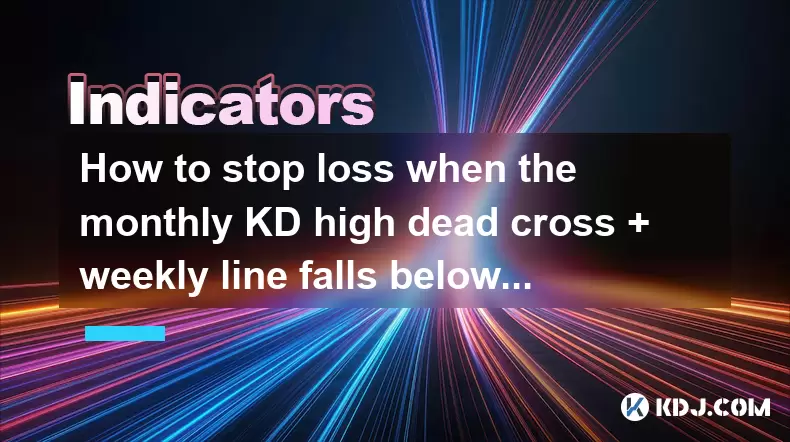
How to stop loss when the monthly KD high dead cross + weekly line falls below the 20-week line + daily line pulls back on the 5-day line?
Jul 24,2025 at 07:00am
Understanding the Indicators: KD, Weekly, and Daily Moving AveragesWhen traders analyze cryptocurrency price movements, they often rely on technical i...
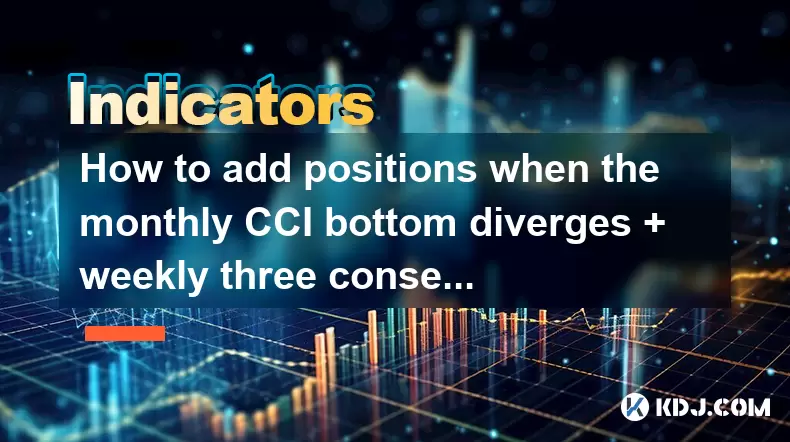
How to add positions when the monthly CCI bottom diverges + weekly three consecutive Yang + daily line gap is not filled?
Jul 24,2025 at 05:22am
Understanding the Monthly CCI Bottom DivergenceWhen analyzing the monthly CCI bottom divergence, traders are identifying a potential reversal signal i...
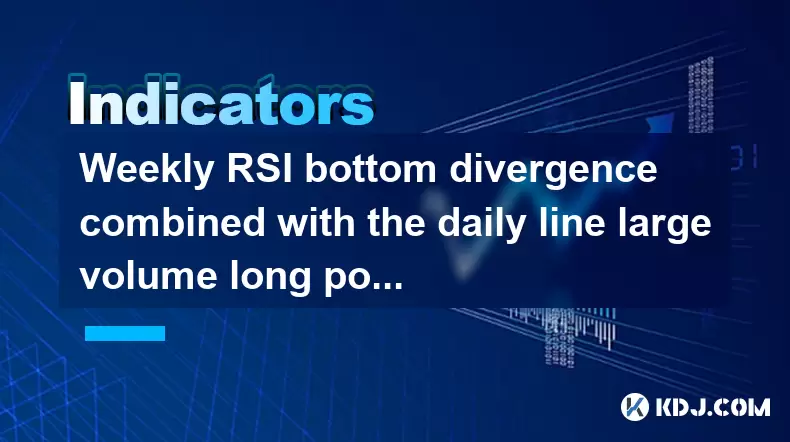
Weekly RSI bottom divergence combined with the daily line large volume long positive start signal
Jul 24,2025 at 05:28am
Understanding RSI Bottom Divergence in Cryptocurrency TradingIn the context of cryptocurrency trading, RSI bottom divergence is a powerful technical s...
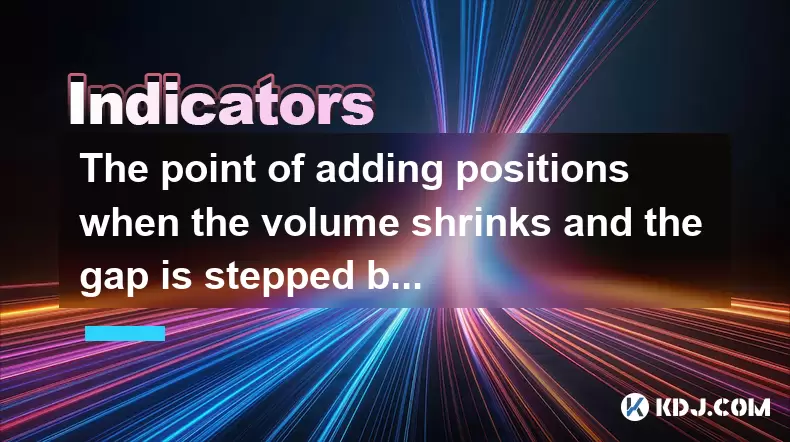
The point of adding positions when the volume shrinks and the gap is stepped back after the gap is jumped
Jul 24,2025 at 04:56am
Understanding the Gap Jump Phenomenon in Cryptocurrency TradingIn cryptocurrency trading, a gap jump occurs when the price of a digital asset opens si...
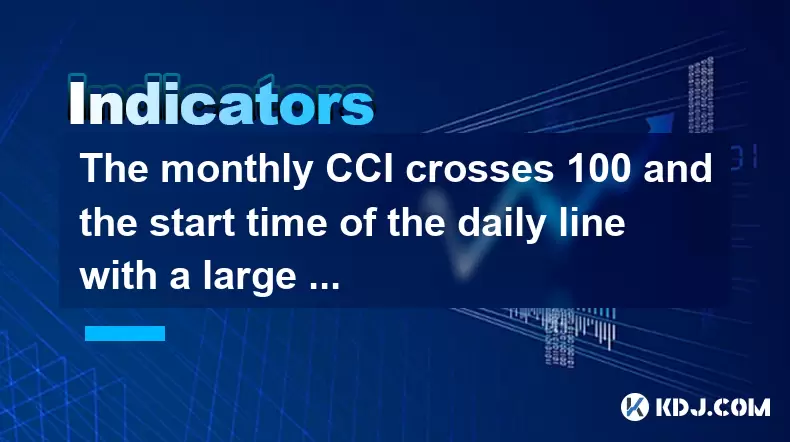
The monthly CCI crosses 100 and the start time of the daily line with a large volume positive line
Jul 24,2025 at 03:56am
Understanding the Monthly CCI Indicator and Its Significance at 100The Commodity Channel Index (CCI) is a momentum-based oscillator used to identify o...
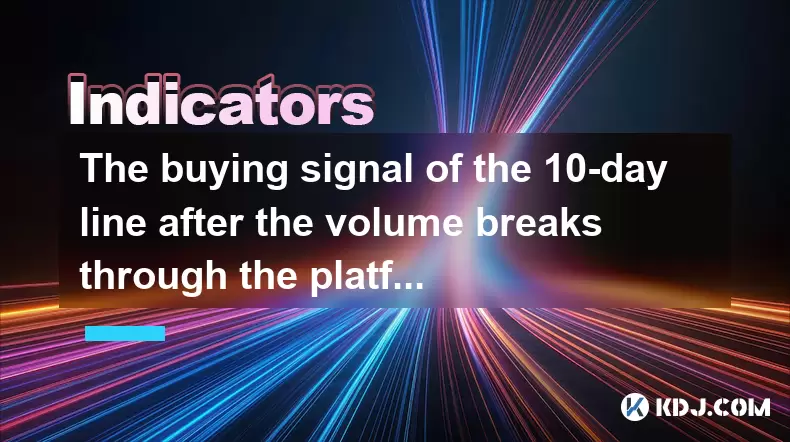
The buying signal of the 10-day line after the volume breaks through the platform
Jul 24,2025 at 06:00am
Understanding the 10-Day Moving Average in Cryptocurrency TradingIn cryptocurrency trading, moving averages are essential tools for identifying trends...

How to stop loss when the monthly KD high dead cross + weekly line falls below the 20-week line + daily line pulls back on the 5-day line?
Jul 24,2025 at 07:00am
Understanding the Indicators: KD, Weekly, and Daily Moving AveragesWhen traders analyze cryptocurrency price movements, they often rely on technical i...

How to add positions when the monthly CCI bottom diverges + weekly three consecutive Yang + daily line gap is not filled?
Jul 24,2025 at 05:22am
Understanding the Monthly CCI Bottom DivergenceWhen analyzing the monthly CCI bottom divergence, traders are identifying a potential reversal signal i...

Weekly RSI bottom divergence combined with the daily line large volume long positive start signal
Jul 24,2025 at 05:28am
Understanding RSI Bottom Divergence in Cryptocurrency TradingIn the context of cryptocurrency trading, RSI bottom divergence is a powerful technical s...

The point of adding positions when the volume shrinks and the gap is stepped back after the gap is jumped
Jul 24,2025 at 04:56am
Understanding the Gap Jump Phenomenon in Cryptocurrency TradingIn cryptocurrency trading, a gap jump occurs when the price of a digital asset opens si...

The monthly CCI crosses 100 and the start time of the daily line with a large volume positive line
Jul 24,2025 at 03:56am
Understanding the Monthly CCI Indicator and Its Significance at 100The Commodity Channel Index (CCI) is a momentum-based oscillator used to identify o...

The buying signal of the 10-day line after the volume breaks through the platform
Jul 24,2025 at 06:00am
Understanding the 10-Day Moving Average in Cryptocurrency TradingIn cryptocurrency trading, moving averages are essential tools for identifying trends...
See all articles

























































































